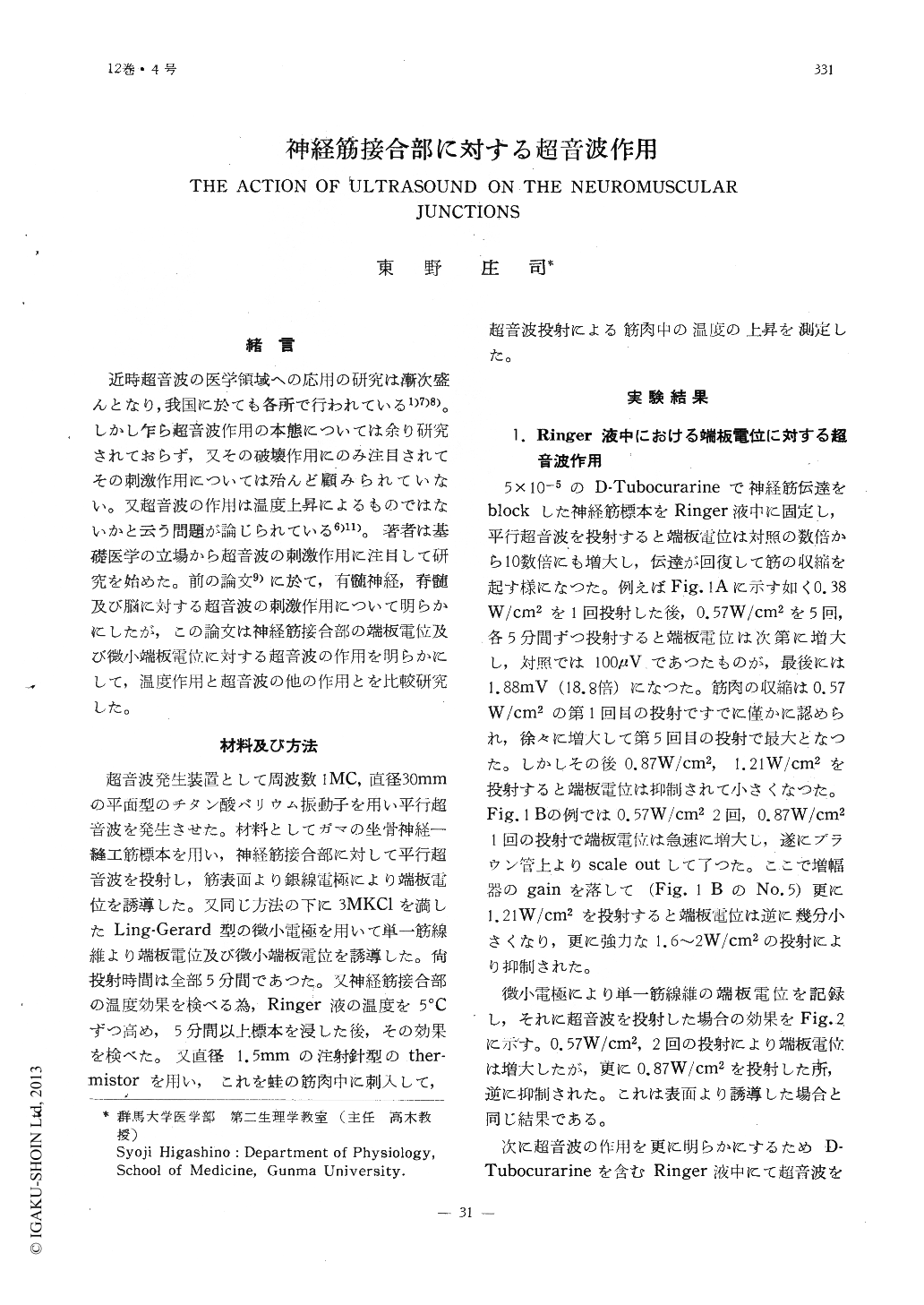Japanese
English
- 有料閲覧
- Abstract 文献概要
- 1ページ目 Look Inside
緒言
近時超音波の医学領域への応用の研究は漸次盛んとなり,我国に於ても各所で行われている1)7)8)。しかし乍ら超音波作用の本態については余り研究されておらず,又その破壊作用にのみ注目されてその刺激作用については殆んど顧みられていない。又超音波の作用は温度上昇によるものではないかと云う問題が論じられている6)11)。著者は基礎医学の立場から超音波の刺激作用に注目して研究を始めた。前の論文9)に於て,有髄神経,脊髄及び脳に対する超音波の刺激作用について明らかにしたが,この論文は神経筋接合部の端板電位及び微小端板電位に対する超音波の作用を明らかにして,温度作用と超音波の他の作用とを比較研究した。
Using a sciatic nerve-sartorius muscle pre-paration of a toad, the actions of ultrasound on the neuromuscular junction were studied. It was intended to distinguish the tempera-ture action from the other actions of ultra-sound. When a curarized muscle in Ringer's solution was irradiated with ultrasound, the end plate potential (e.p.p.) was rapidly enlarg-ed and muscular contraction was resumed. With stronger ultrasound, the e.p.p. was conversely decreased and muscular contrac-tion was also inhibited. By ultrasonic irra-diation in Ringer's solution with D-Tubocura-rine, the e.p.p. was initially decreased, but thereafter it was slightly recovered by re-petitive irradiation. The recovery of the mag-nitude of e.p.p. by ultrasonic irradiation was found far more than the spontaneous recovery in Ringer's solution. The frequency of miniaoure end plate potential (m.e.p.p.) was strikingly increased by irradiation with weak ultrasound. It was, however, decreased by repetitive or strong ultrasonic irradiation. The rise of muscle temperature due to irra-diation with weak ultrasound which had an augmentative action was found to be about 6.5℃.

Copyright © 1960, Igaku-Shoin Ltd. All rights reserved.


